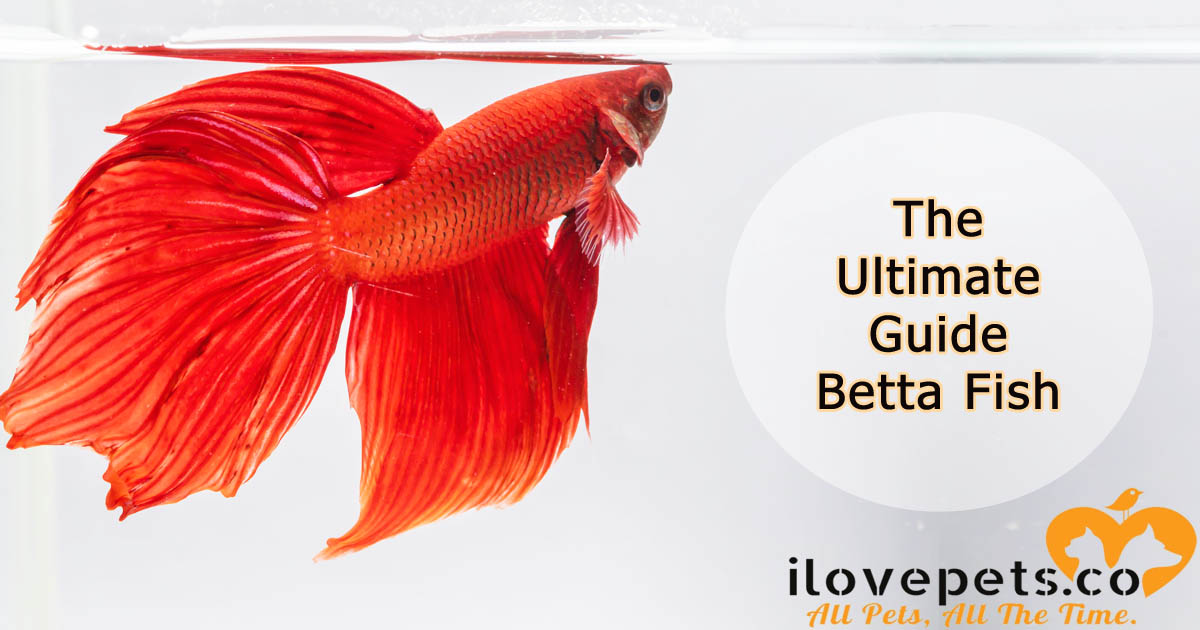
The betta fish, also known the as the Siamese Fighting Fish, is one of the most popular, most affordable, and most foolproof small pets you can own. They’re tough, living an average of three years, and can often survive beginner’s mistakes, making them a wonderful pet for a child or anyone who wants a stunning companion that requires simple care.
Where To Buy Your Betta Fish
You’ve probably seen betta fish in cups or plastic bags at your local Walmart, carnival or pet supply chain, selling for about five dollars. The miniscule amount of water in the cups means that the fish’s wastes quickly build up, creating a toxic environment for the betta.
Being stuck in a tiny cup or bag with nowhere to swim, surrounded by bright lights, is extremely stressful to bettas. Many die before they are ever sold. Even so, betta fish are hardy. They may look dull and lethargic at the store, but they usually perk up after a few days of proper care in your home.
While you can get a decent betta fish at a store, you might decide to make a purchase from a seller who keeps their fish in better conditions. A freshwater fish breeder or aquatic specialty store would be more ideal sources.
The cheap bettas sold in stores are typically of the veil tail variety.


Other varieties are available from a breeder or specialty store.

How Much Water Do Bettas ACTUALLY Need?
It’s widely believed that betta fish thrive in puddles, therefore they should be kept in very small fish bowls.
The truth is, betta fish live in wetlands and rice paddies, which are semi-flooded fields in which rice is farmed. Rice paddies can be as deep as two feet, and they’re many yards wide during the rainy season.
As the water evaporates, the paddies can become quite shallow. Bettas have adapted to survive, but not thrive, in very shallow pools of water. They have the ability to jump out of the water to access larger pools.
Betta fish are commonly found in small, still bodies of water dense with vegetation. These bodies of water are not well oxygenated, making them uninhabitable for most fish. Bettas are able to survive in them because they have an organ called a labyrinth, a sort of lung that allows them to breathe air as we do. That is why they must swim to the surface of the water every few minutes to inhale through their mouth.
A betta fish should, at minimum, live in a one-gallon fishbowl. The smaller the bowl or tank, though, the faster your fish’s wastes will build up, leaving them vulnerable to ammonia toxicity. So, a one-gallon tank needs a complete water change every 5-6 days.
The betta’s ability to jump means that they will jump out of your bowl or tank given the opportunity. Because they breathe air through their labyrinth, they often survive those suicide missions as long as they are returned to the water before they dry out. Even so, you should cover your tank to prevent jumping.
What To Feed Your Betta
Your betta’s main diet should consist of a complete and balanced food like TetraBetta Floating Mini Pellets Color Enhancing Betta Fish Food.
A betta’s stomach is about as big as their eye, so you’ll want to use that as a guideline for serving sizes. This comes out to 2-4 pellets per meal, twice a day. Replace your container of fish food every six months, as the nutrients begin to break down over time.
Betta fish are prone to bloat and constipation. Fasting for 24 hours, once a week, is good for their digestion.
You can occasionally feed green peas to add fiber to your betta’s diet. The pea should be cooked, skinned and mashed. You’ll likely only need to feed 1/4 to 1/2 of the pea. Feed peas no more than once a week.
As a treat, bettas absolutely adore bloodworms. You can find these live or frozen in fish speciality stores, though it’s easier and cheaper to use Tetra Freeze Dried Bloodworms.
Both pellets and bloodworms can be fed dry or soaked – see which your betta prefers. Soaking food before feeding prevents constipation.
Do Betta Fish Need Heaters And Filters?
Betta fish thrive in temperatures between 70 and 80 degrees Fahrenheit. The interior of your home is probably warm enough to make heaters unnecessary. However, if your home dips below 68 degrees in the winter, you may want to use a heater.
Bettas become lethargic when the water is too cold, and overactive when it’s too warm. Sudden temperature changes can cause shock, which can be fatal, so make sure you make changes slowly, and allow new water to reach room temperature when cleaning their tank.
Filters can help you go longer between water changes, though they are not necessary. You will still need to change the water even with a filter.
Do Bettas Get Along With Tank Mates?
Male bettas are extremely aggressive and should never be housed with one another. Before they were bred for their vivid colors, bettas were mainly bred in Thailand for people to purposely make them fight so they could bet on them.
In the rice paddies, they had plenty of space to avoid the need for fighting. When two males encounter one another, they flare their gills and fins to appear larger. If that doesn’t prevent a fight, they will bite and hold onto each other’s fins, tearing and eating the pieces. They will fight to the death.
For enrichment, you can place a mirror in front of your betta, on the outside of the tank, so he will put on that amazing display. Doing this for a few minutes is actually healthy for them, but it becomes stressful if you do this for prolonged periods, or more than once a day.
You can house male bettas with fish of other breeds. Never place them with long-finned fish that they may mistake for another male betta.
Tetras, African dwarf frogs, and rasboras are all common betta tankmates. Feeder guppies can live with bettas, but not long-finned fancy guppies.
Snails, shrimp, loaches, plecos and catfish can also live with your betta. They eat algae and debris in the substrate, helping to keep your tank clean. However, they may need additional food and will produce wastes, so make sure you only add tankmates after researching them to make sure you can provide proper care.
Females can get along happily in groups called sororities, though they can sometimes become territorial, particularly if you introduce a new female into an established tank. It’s possible to house your male with females, but only if you’re prepared to breed them.
As a general rule of thumb, you’ll need a gallon of water for every inch of fish. So a three-inch betta would need a three-gallon tank, and if you add a two-inch guppy, you’ll need a five-gallon tank. If you plan to give your betta tankmates, aim for at least ten gallons.
How To Decorate Your Betta Tank
Your substrate should be fine gravel. Big rocks or colorful marbles tend to create gaps that allow debris to fall through, making it harder to keep clean.
You can use plastic, silk or real plants to give your betta places to hide and rest. Bettas can become stressed in empty tanks that do not allow them to hide.
Marino moss balls require no care, and bettas seem to love them.
Other live plants may need sunlight, though your betta tank should be kept out of direct, natural sunlight – it’s easy for the tank to overheat. If you use plants, use an aquarium light in 12-12 hour cycles of light and darkness.
Avoid those betta vases that house an aquatic plant on top with a small space for the betta on the bottom. Your betta needs room at the surface of the water to breathe, and the roots of the plant do not actually provide sufficient nutrition. While these products are advertised as self-sufficient ecosystems, they are not ideal for the plant, nor the fish.
How To Clean Your Betta Bowl Or Tank
A healthy bowl or tank goes through a natural biological cycle.
Fish, rotting food and plants create wastes known as ammonia. Ammonia is toxic to fish. Bacteria consumes the ammonia and converts it into nitrite, which is also harmful to fish. Finally, bacteria consumes nitrite and converts it to nitrate, which is harmless to fish.
These chemicals all exist in your tank at all times. Frequent water changes keep these chemicals at manageable levels that are not harmful to your betta.
To keep your tank healthy, use a testing kit to make sure the levels are ideal. Use tap water treated with water conditioner to remove chlorine, which kills the beneficial bacteria in your tank.
Ideally, you will jumpstart the cycle before bringing your fish home. Because your betta may come from a high-stress environment in a pet store, pre-cycling the tank helps them become happy and healthy in less time.
You may need to experiment to figure out the best cleaning schedule for your particular tank. If you have a fish bowl, you’ll need to do partial water changes every other day, and full tank clean-outs every week. A large tank with filters can go weeks between water changes and cleanings.
There is no need to use soap to clean your fish tank. Rinse the sides of the tank and any decorations, substrate or plants.
Bettas tend to jump onto the floor during cleanings, so always place them in a container with a lid while they wait for their home to be cleaned.
You can keep your fish in the tank during partial water changes. For bowls, remove 10% of the water, and for larger tanks, remove up to 25%, then replace the water with conditioned water that has reached the same temperature as the remaining tank water.
Keeping Your Betta Fish Healthy
Most veterinarians do not treat fish, though some specialists might. Hobbyists typically treat sick fish by putting them in isolated tanks and using medications that are put into the water.
Take clear photos of your fish (it’s best to use flash) so you will notice if there are any changes in color, growths or bumps. Most infections and illnesses are caused by poor nutrition or dirty water.
With a clean tank and a balanced diet, you can expect your betta to live about three years, though they can live up to see ten. These fish are widely underestimated.
Bettas look forward to feedings, and they develop personalities – for what little they need, bettas bring so much beauty, and tranquility into your home and your life.






